Olduvai Gorge
Olduvai Gorge
Olduvai Gorge, often referred to as the “Cradle of Mankind,” is one of the most significant paleoanthropological sites in the world. Located in the Great Rift Valley of northern Tanzania, it provides critical insights into human evolution. The gorge has yielded some of the earliest evidence of human ancestors and their behaviors, making it a key site for understanding the origins of the human species.
Key Features of Olduvai Gorge
1. Location and Geography:
Olduvai Gorge is situated in the eastern Serengeti Plains, about 45 kilometers (28 miles) from the Ngorongoro Crater, within the Ngorongoro Conservation Area in northern Tanzania.
The gorge is approximately 48 kilometers (30 miles) long and up to 90 meters (300 feet) deep. It is part of the Great Rift Valley, a major geological feature that runs through East Africa.
2. Geological Significance:
The gorge is a steep-sided ravine that was formed over millions of years by erosion. It exposes layers of volcanic rock, ash, and sediment that have preserved fossils and artifacts over a vast timescale.
The geological layers, or stratigraphy, at Olduvai Gorge are well-defined and provide a timeline of volcanic activity, climate changes, and environmental shifts over the past two million years.
3. Paleoanthropological Discoveries:
Olduvai Gorge has produced a wealth of fossilized bones, stone tools, and other artifacts that have been crucial in understanding early human evolution. Key discoveries include:
- Homo habilis: In 1960, the first fossil of Homo habilis, an early human species, was discovered by Louis and Mary Leakey. This species is thought to have lived around 2.1 to 1.5 million years ago and is characterized by its larger brain size compared to earlier hominins.
- Paranthropus boisei: Also discovered by the Leakeys in 1959, this robust hominin species lived around 2.3 to 1.2 million years ago. It had a distinctive skull with strong jaws and large teeth, adapted for chewing tough plant material.
- Homo erectus: Fossils of Homo erectus, an early human ancestor known for its larger body size and use of tools, have also been found at Olduvai Gorge. This species lived approximately 1.9 million to 110,000 years ago.
- Stone Tools: The Oldowan stone tools, named after Olduvai, are some of the oldest known tools, dating back about 2.6 million years. These simple tools represent the earliest evidence of technology used by hominins.
4. Archaeological Importance:
Olduvai Gorge provides critical evidence of early human behavior, including tool-making, hunting, and scavenging. The presence of stone tools and butchered animal bones suggests that early humans at Olduvai were using tools to process meat, a significant advancement in human evolution.
The site also offers insights into the social organization and environmental adaptations of early human ancestors, indicating that they lived in groups and exploited a variety of resources in their environment.
5. Paleoenvironmental Insights:
Fossilized remains of animals, plants, and pollen found in the sediments of Olduvai Gorge provide information about the ancient environments that early humans inhabited. These findings indicate that the region has experienced significant climatic and environmental changes over the past two million years.
The evidence suggests that Olduvai was once a wetter, more forested area with lakes and rivers, which gradually gave way to drier, savanna-like conditions. These changes likely influenced the evolution and adaptation of early humans.
6. Research and Exploration:
Olduvai Gorge has been a site of continuous research and exploration since the early 20th century, primarily led by the Leakey family. Louis and Mary Leakey began excavations in the 1930s, and their work has been continued by their son, Richard Leakey, and other paleoanthropologists.
The site remains an active area of research, with ongoing excavations and studies by scientists from around the world. These efforts continue to yield new discoveries and insights into human evolution.
7. Tourism and Education:
Olduvai Gorge is a popular destination for tourists interested in archaeology and human history. Visitors can explore the site, view fossils and artifacts, and learn about the history of human evolution.
The Olduvai Gorge Museum, located near the main excavation sites, features exhibits on the history of the gorge, the discoveries made there, and the significance of the findings in understanding human evolution. The museum offers guided tours and educational programs for visitors.
8. Cultural and Historical Significance:
Olduvai Gorge holds cultural and historical significance for the local Maasai people, who have lived in the region for centuries. The Maasai name for the area is “Oldupai,” which refers to a type of wild sisal plant that grows in the gorge.
The site is recognized as a UNESCO World Heritage Site as part of the Ngorongoro Conservation Area, highlighting its global importance for understanding the origins of humankind.
Significance
Olduvai Gorge is a landmark site in the field of paleoanthropology, providing some of the earliest and most comprehensive evidence of human evolution. Its rich fossil record and well-preserved archaeological sites offer a unique window into the lives of early humans and their environments. The discoveries made at Olduvai Gorge have shaped our understanding of the origins and development of the human species, making it a crucial site for both scientific research and public education.
Conclusion:
Olduvai Gorge stands as a testament to the deep history of human evolution, offering invaluable insights into the origins and development of our species. Its rich archaeological and fossil record continues to inform and inspire scientists, historians, and visitors alike. As a key site in the study of early humans, Olduvai Gorge remains a vital link to our past, helping us to understand the journey of humankind from ancient ancestors to the present day.

